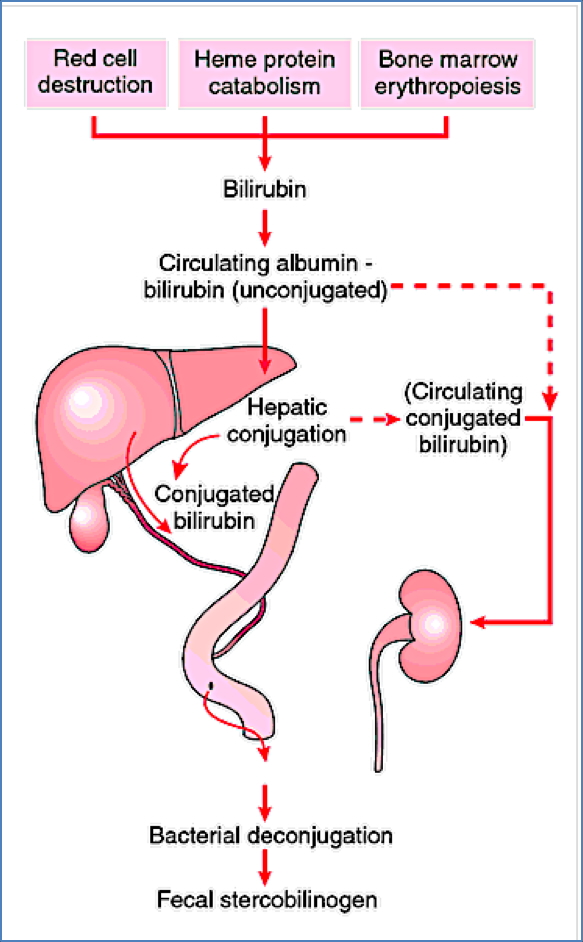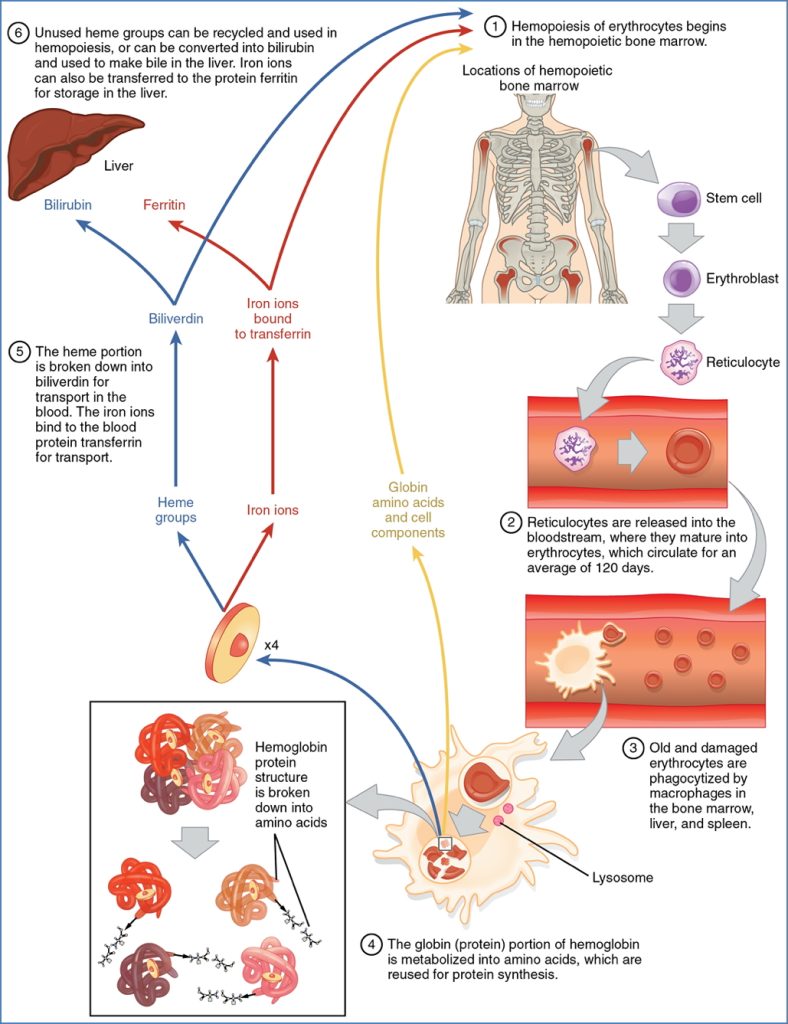Table of Contents
Overview – Bilirubin Metabolism
Bilirubin metabolism represents a critical liver function, transforming toxic heme breakdown products into safe, excretable forms. This process integrates haemoglobin degradation, hepatic conjugation, bile secretion, intestinal conversion, and systemic clearance. Dysregulation leads to jaundice and offers diagnostic insight into haemolytic, hepatic, or obstructive disease. This article reviews the complete bilirubin pathway, its physiological significance, and clinical markers.
What Is Bilirubin?
- Yellow pigment produced from heme breakdown
- Acts as a potent antioxidant
- Unconjugated (free) bilirubin = toxic and insoluble
- Conjugated bilirubin = water-soluble and non-toxic
- ~75% of total body bilirubin originates from senescent RBCs
- Excreted into bile by hepatocytes
Formation of Bilirubin – Spleen & Reticuloendothelial System
- RBC Breakdown
- Occurs in spleen, bone marrow, liver
- Macrophages phagocytose aged RBCs → release haemoglobin
- Haemoglobin Degradation
- Haemoglobin → Heme + Globin
- Heme –(Heme oxygenase)→ Biliverdin + Fe³⁺
- Biliverdin –(Biliverdin reductase)→ Unconjugated bilirubin
- Unconjugated bilirubin is lipid-soluble, toxic → bound to albumin in plasma
Bilirubin Processing – Liver
Conjugation
- Hepatocytes conjugate bilirubin with sugars (glucuronic acid, xylose, ribose)
- Catalysed by UDP-glucuronosyltransferase
- Yields conjugated bilirubin → water-soluble and excretable
Excretion
- Conjugated bilirubin → secreted into bile → enters gut
- Most → converted to stercobilin (faeces pigment)
- Some reabsorbed → excreted as urobilinogen or conjugated bilirubin in urine
Intestinal Bilirubin Conversion
- Small intestine → large intestine:
- Colonic bacteria convert bilirubin →
- Urobilinogen
- Stercobilinogen → oxidised to stercobilin
- Colonic bacteria convert bilirubin →
- Faeces colour derives from stercobilin

Iron Handling
- In RBC degradation, Fe³⁺ is released
- Transferrin transports Fe³⁺ to:
- Bone marrow → erythropoiesis
- Liver → storage
Hepatic Iron Storage
- Stored as:
- Ferritin: protein shell capable of binding ~4500 Fe³⁺ ions
- Hemosiderin: if ferritin capacity exceeded


Jaundice
Definition
- Yellowing of skin, sclera, and mucosa
- Caused by hyperbilirubinaemia
Classifications
- Pre-hepatic: ↑ RBC breakdown (e.g. haemolysis)
- Hepatic: impaired conjugation (e.g. hepatitis, cirrhosis)
- Post-hepatic: bile flow obstruction (e.g. gallstones, tumours)
Diagnostic Markers
- Hepatocellular damage:
- AST, ALT
- Cholestasis (intra/extrahepatic):
- Alkaline phosphatase (ALP)
- Gamma-glutamyltransferase (γGT)
- Synthetic liver function:
- Serum albumin
- Blood urea
- Clotting factors
Summary – Bilirubin Metabolism
Bilirubin is a heme-derived waste that is detoxified by hepatocytes and eliminated via bile. It undergoes complex transformations from spleen to intestine, with disruption at any stage leading to jaundice. Key liver enzymes and function tests help differentiate between pre-hepatic, hepatic, and post-hepatic causes. For a broader context, see our Gastrointestinal Overview page.